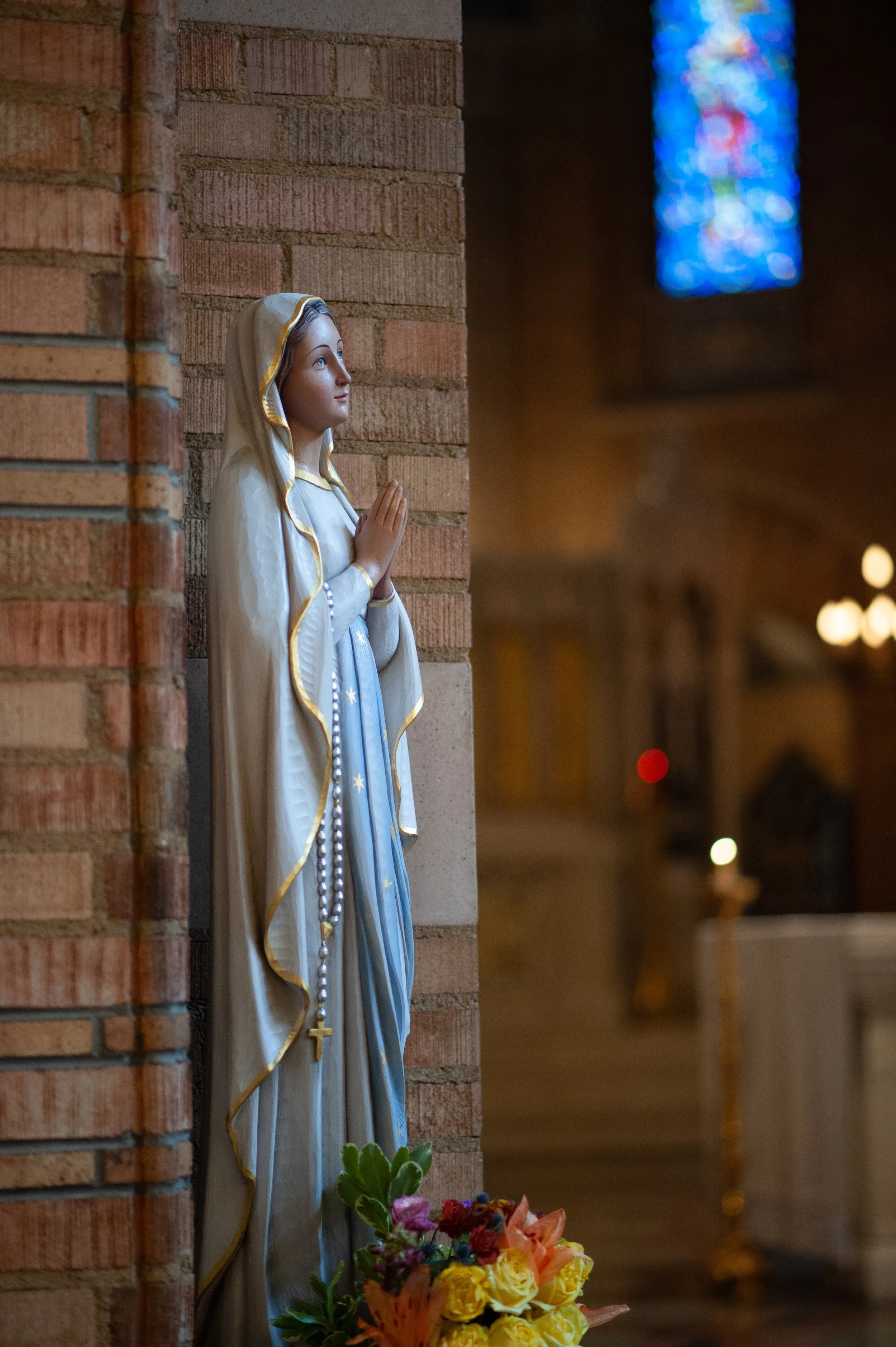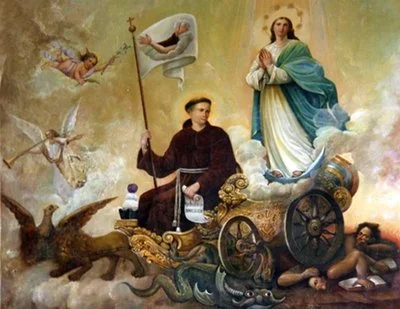Aquinas on the Immaculate Conception
When it comes to student participation in the classroom, those who teach know that there are two kinds of pupils. First, are those who choose not to answer out of fear of seeming unintelligent. Secondly, are those who answer without any fear of the same. This became apparent to me in a recent in-class discussion. In preparing for today’s Solemnity, I began conversation by simply asking them, “What is the Immaculate Conception?”
Many students relayed the correct answer, while other students were understandably confused and so stated, “It’s when Jesus was conceived, right?” Lastly, there were some entirely wrong answers. My favorite incorrect answer given was “It’s about that football game where a player from the Pittsburg Steelers made an amazing catch!” The student was speaking of the “Immaculate Reception,” and I found from that answer a much-needed laugh. To clear any confusion, I gave the class a short spiel on the Dogma of Mary’s Immaculate Conception, which states that she was conceived in the womb of St. Anne without the stain of Original Sin.
It was then that the irony of the situation hit me, for I teach at a school whose namesake is after St. Thomas Aquinas. This is ironic, for while the saint is known for many great things, his profession of Mary’s Immaculate Conception is not one of them. He infamously disputed the notion! Aquinas’ disbelief in the Immaculate Conception garners the critique of those in the Church who have a distaste for Thomism. Yet, I would like to argue that such is not exactly the case, and think taking a deeper look would help in finding the truth of the matter.
First, some historical context. In the 12th century, the sensus fidelium about Mary had led to Masses begun to be celebrated in honor of her Immaculate Conception despite the doctrine having not yet been solemnly defined by the Church. While the doctrine had already been widely professed among the faithful, it was the job of theologians to begin considering whether the belief had a place in systematic theology.
Confusion about the topic was widespread as what exactly was meant by the term “Immaculate Conception” was unclear. Some perceived it to mean that Mary was sanctified in the womb in the same manner as John the Baptist. Others thought it to relate to Mary being sanctified at some other time, such as her birth. Still others perceived it as describing the purity of the conjugal act between Sts. Joachim and Anne. Because of this confusion about the term, St. Bernard advised that Masses being offered in celebration of the belief should cease. Since St. Bernard’s great love for Mary is well known, it is obvious that he encouraged this to protect the faith rather than diminish devotion to the Blessed Mother.
Without getting into the nitty-gritty, further confusion was added as medieval medical knowledge about conception mistakenly led some to believe that a fetus was not formed in the womb until about 40 days after intercourse. Before the formation of the fetus (i.e. the human person!), it was thought that the womb contained solely a mixture of non-living bodily fluids. Therefore, since a person is considered as one having both a body and a soul, a person could not have a soul until they first had a body. When the body was formed after a period of 40 days, God would then give to it a rational soul (animation), and this act of God makes a person. (This is called “Delayed Hominization!”)
Thanks to modern medical knowledge, we know that the aforesaid is not reality. A person is not brewed from a mixture of fluids, but rather receives their corporeal nature (i.e. their body!) at the precise moment of conception which can take place mere hours after conjugal relations. From this, theologians today can teach that is it at tis exact moment of conception that a soul is also created by God, making it a person. (This is called Immediate Hominization!)
All of this is said in order to preface Aquinas’s understanding of Mary’ Conception, which can be found in the third part of his magnum opus, Summa Theologica, in Question 27. Summarized, the saint states that while he believes Mary to have been sanctified in the womb from Original Sin, sanctification took place after the time she received a body, not simultaneously with it. Again, the thought was first the body was created, then the soul. The notion of a body being animated at the precise moment of conception was not thought of, so it could not be considered for theological discussion.
For Aquinas, Mary must have been sanctified after receiving a body as the thought of her never possessing original sin would imply that she was not in need of being saved by Christ. This is in contradiction to St. Paul who said, “Christ is the savior of all men.”(1st Tim. 4:10) Further, how can one say that Mary did not need saving, for she herself has stated in her Magnificat, “My Spirit rejoices in God, my savior. (Luke 1:47)” This was the fundamental problem debated amongst scholars of the day, and the main reason why she was thought to be sanctified from original sin in the womb, rather than never having it in the first place. It is in this light that we can see how Aquinas was simply trying to synthesize the fact that Mary needed a savior, while maintaining her singular holiness.
While this was the fundamental challenge to the doctrine, the sensus fidelium still held that Mary was conceived without ever being guilty of Original Sin. This challenge would not be solved until the arrival of the Franciscan scholar John Duns Scotus. Scotus proposed Mary’s redemption as having been preservative, meaning that God saved her by never even allowing her to incur the guilt of original sin.
This can be attributed to the merits won by Christ having a transcending characteristic through time. Simply put, Christ’s passion merited salvation for the righteous not only during his earthly life, but those who’ve lived before and after it. From this, Scotus can say that in God’s foreknowledge of the both the Cross and Mary’s unique vocation, God saw that it was fitting that she should be conceived without Original Sin. This means that Mary was redeemed by Christ, before Christ even took flesh in her womb! To use an analogy, most of humanity is saved by being pulled out from the mud-pit of sin. Mary on the other hand, was saved by never being allowed to fall in it.
In conclusion, it is unfair that some would use this glorious feast day to discredit the brilliance of the Angelic Doctor. It must be noted that St. Thomas did not have both the invaluable insight of modern science and the privilege of having an infallible declaration of the Church. Aquinas never taught against Her holy wisdom, as the matter was still up for debate. I would like to believe that if Aquinas were aware of contemporary medical knowledge, he would have come to different conclusions about our Lady. Yet, perhaps the formulation of the dogma in this way been willed by God, as he has given us a beautiful example of the “development of doctrine.”



